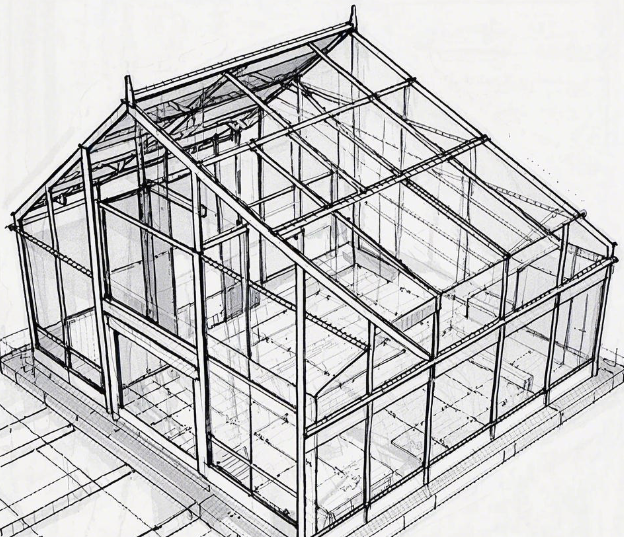Greenhouses play a crucial role in modern agriculture. They provide crops with a controlled, warm environment, allowing them to grow regardless of the season. However, greenhouses aren’t perfect. As an agricultural professional, it's important to understand their limitations. Let's take a look at the challenges associated with greenhouse farming.
1. High Initial Costs
The construction of a greenhouse requires significant financial investment. Whether it's for steel frames, glass or plastic covers, or automated control systems, all of these factors contribute to the high costs of greenhouse setup. For small-scale farms or startup agricultural businesses, this can be a substantial financial burden. Additionally, maintenance costs are ongoing, especially for glass greenhouses, which are prone to damage from wind and rain, and plastic-covered greenhouses, which require regular replacement of the film material. These additional costs make greenhouses an expensive option in the long run.

2. High Energy Consumption
Greenhouses require a lot of energy to maintain a stable internal environment, particularly in colder climates. During the winter, heating systems must run constantly to ensure crops are protected from the cold. In colder regions, the energy costs can make up 30% to 40% of the total production costs. This heavy reliance on energy not only increases operating expenses but also makes greenhouses vulnerable to fluctuations in energy prices, which can affect the sustainability of agricultural production.
3. Dependence on Technology and Management Complexity
Modern greenhouses heavily rely on automated systems for regulating temperature, humidity, irrigation, and light levels. As a result, managing a greenhouse requires a high level of technical knowledge. If systems are not managed correctly, environmental imbalances may occur, which can negatively affect crop growth. Greenhouse managers need to be familiar with agricultural knowledge and technology to ensure smooth operations, making the management process more complex and requiring ongoing learning.
4. Impact of Climate Change
While greenhouses can regulate the internal environment, they are still vulnerable to external weather conditions. Extreme weather events, such as storms, snow, or heatwaves, can put a significant amount of stress on greenhouses. For example, strong winds and heavy snow can damage the structure, while extreme heat may overload the air conditioning system, leading to uncomfortably high temperatures that harm crops. Even though greenhouses are designed with wind resistance and insulation in mind, they cannot fully shield crops from the unpredictability of climate change.

5. Soil Fertility Challenges
Greenhouse farming, particularly when growing crops in soil, can lead to a depletion of nutrients over time. High-density planting consumes soil nutrients like nitrogen, phosphorus, and potassium quickly, reducing soil fertility. If soil management is not handled properly, the crop yield and quality can suffer. While hydroponic and soil-less growing systems help mitigate this issue, they come with their own set of challenges, such as the need for specialized equipment and space.
6. Pest and Disease Management Issues
Although the controlled environment of a greenhouse can reduce the entry of pests from outside, once pests or diseases do get in, they can spread quickly. Greenhouses lack natural predators, which means that pest control becomes more difficult. If pests or diseases are not dealt with promptly, they can destroy crops rapidly, resulting in significant losses. Greenhouse managers must constantly monitor for pests and diseases, which requires a lot of time and effort
7. Limited Space Utilization
The space within a greenhouse, while providing an optimal growing environment, can be limiting. For crops that require more room, such as watermelons or pumpkins, the available space may not be sufficient. In larger greenhouses, optimizing space becomes a key issue. How efficiently the space is used affects crop yields. Techniques like vertical farming or multi-tiered planting can increase space utilization, but these systems also require careful planning and the right equipment to be effective.

Welcome to have a further discussion with us.
Email:info@cfgreenhouse.com
Phone:(0086)13980608118
●#GreenhouseAgriculture
●#GreenhouseChallenges
●#AgriculturalTechnology
●#SustainableFarming
Post time: Mar-03-2025







 Click to Chat
Click to Chat